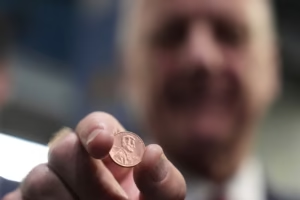The United States minted its final one-cent coin on Wednesday in a historic event held at the Philadelphia Mint, marking the end of over two centuries of penny production. The penny, first introduced in 1793, has been a staple of American currency for 232 years but has now been phased out due to its manufacturing costs far exceeding its value. Each penny costs the government nearly four cents to produce, making continued minting economically impractical. This decision is expected to save the U.S. Mint approximately $56 million annually.
Despite the halt in production, pennies already in circulation—estimated at more than one billion dollars worth—remain legal tender and will continue to be used for transactions. However, the government will no longer produce new pennies, and their scarcity may gradually increase in everyday cash dealings. The move could prompt businesses and retailers to round cash transactions to the nearest five cents, as some have already begun to face difficulties due to penny shortages.
The U.S. Mint’s decision to cease penny production follows similar actions by other countries such as Canada, New Zealand, and Australia, where the smallest denominations have been eliminated as well. The rising reliance on electronic and non-cash payments, which represent the majority of transactions, especially in recent years, has further lessened the penny’s utility.
Historically, the penny has been culturally significant, with President Abraham Lincoln becoming the first president to be featured on a coin when the penny bore his image starting in 1909, coinciding with the centennial of his birth. The penny was often referred to as the coin of the common people, symbolized elegantly by writer Carl Sandburg’s tribute to Lincoln as “Honest Abe,” the humble face on the common folks’ coin.
While the penny is being discontinued, other coins will continue to be minted. However, there remain challenges with the production of nickels, which cost around 14 cents each to make, far exceeding their five-cent face value. Treasury Secretary Scott Bessent mentioned that the administration is exploring ways to break even on nickel production by altering the composition of the coin. On a brighter note, the dime remains profitable to produce, providing some reprieve in the ongoing adjustments to coinage.
Rep. John Rose from Tennessee highlighted during a congressional hearing that increasing demand for nickels could result from the penny’s phase-out, underscoring the complexity of reforming coin production and currency circulation.
The end of the penny’s era marks a significant shift in American currency history, reflecting changing economic realities, technological advancements in payment systems, and ongoing efforts to reduce government costs associated with currency production.










